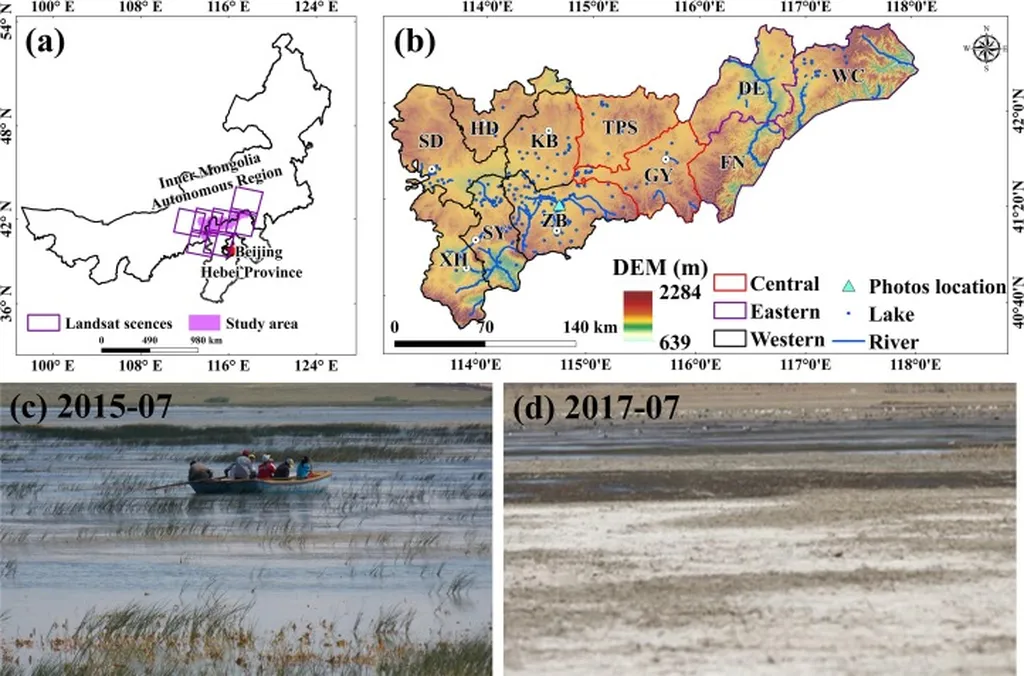In the heart of China’s Bashang Plateau, a delicate balance is being struck between the demands of agriculture and the pressing need to preserve precious groundwater resources. This region, often referred to as the “Green Great Wall,” acts as a crucial barrier against desertification and is a vital water conservation area for the Beijing-Tianjin-Hebei region. However, the rapid expansion of the vegetable industry since the 1990s has put immense pressure on local water supplies, threatening both ecological stability and regional water security.
A recent study published in the journal *Agricultural Water Management* (translated as *Agricultural Water Management*) sheds light on this critical issue. Led by Gong Cheng of the Hebei Key Laboratory of Agricultural Water-Saving and the Natural Resource Ecology Laboratory at Colorado State University, the research team set out to quantify crop-specific water consumption and explore sustainable planting structures that could reduce agricultural water use without compromising economic and ecological viability.
The study analyzed the temporal dynamics of dominant crop planting areas, including corn, beans, naked oats, oilseeds, coarse cereals, sugar crops, potatoes, and vegetables, from 2000 to 2020. The researchers also examined the spatial-temporal characteristics of regional precipitation, temperature, and soil moisture distribution during this period. To measure crop-specific evapotranspiration (ET), field experiments were conducted from 2021 to 2022. The team then employed the nondominated sorting genetic algorithm II (NSGA-II) to generate sustainable planting structures under various regional water-saving targets.
The findings revealed a significant shift in planting structure over the past two decades, with a notable increase in water-intensive crops. This trend peaked between 2013 and 2016 before declining due to water scarcity and market dynamics. The study identified that a 10% water reduction scenario (S1) could be achieved by reducing the planting area of potatoes and vegetables and increasing coarse cereals, particularly in regions with lower precipitation like Shangyi and Kangbao. This approach maintained economic benefits and ecosystem service value.
However, more ambitious water reduction targets of 20% and 30% (S2 and S3) resulted in economic losses of 6% and 12.7%, respectively. “Balancing groundwater sustainability with agricultural productivity requires optimizing planting structures, supported by improved irrigation technologies and policy incentives,” stated Gong Cheng, emphasizing the need for a balanced crop restructuring strategy.
The research highlights the importance of prioritizing high-value crops while limiting water-intensive crops to ensure a sustainable agricultural system in this ecologically sensitive region. As the world grapples with the challenges of climate change and water scarcity, the findings from this study offer valuable insights for policymakers, farmers, and agricultural businesses. By adopting sustainable planting structures and investing in advanced irrigation technologies, the agricultural sector can mitigate the impacts of groundwater over-extraction and contribute to long-term ecological and economic stability.
This study not only underscores the need for immediate action but also paves the way for future developments in the field. As Gong Cheng and his team continue to explore innovative solutions, the agricultural community can look forward to more sustainable and resilient practices that balance the demands of production with the imperative of conservation.

